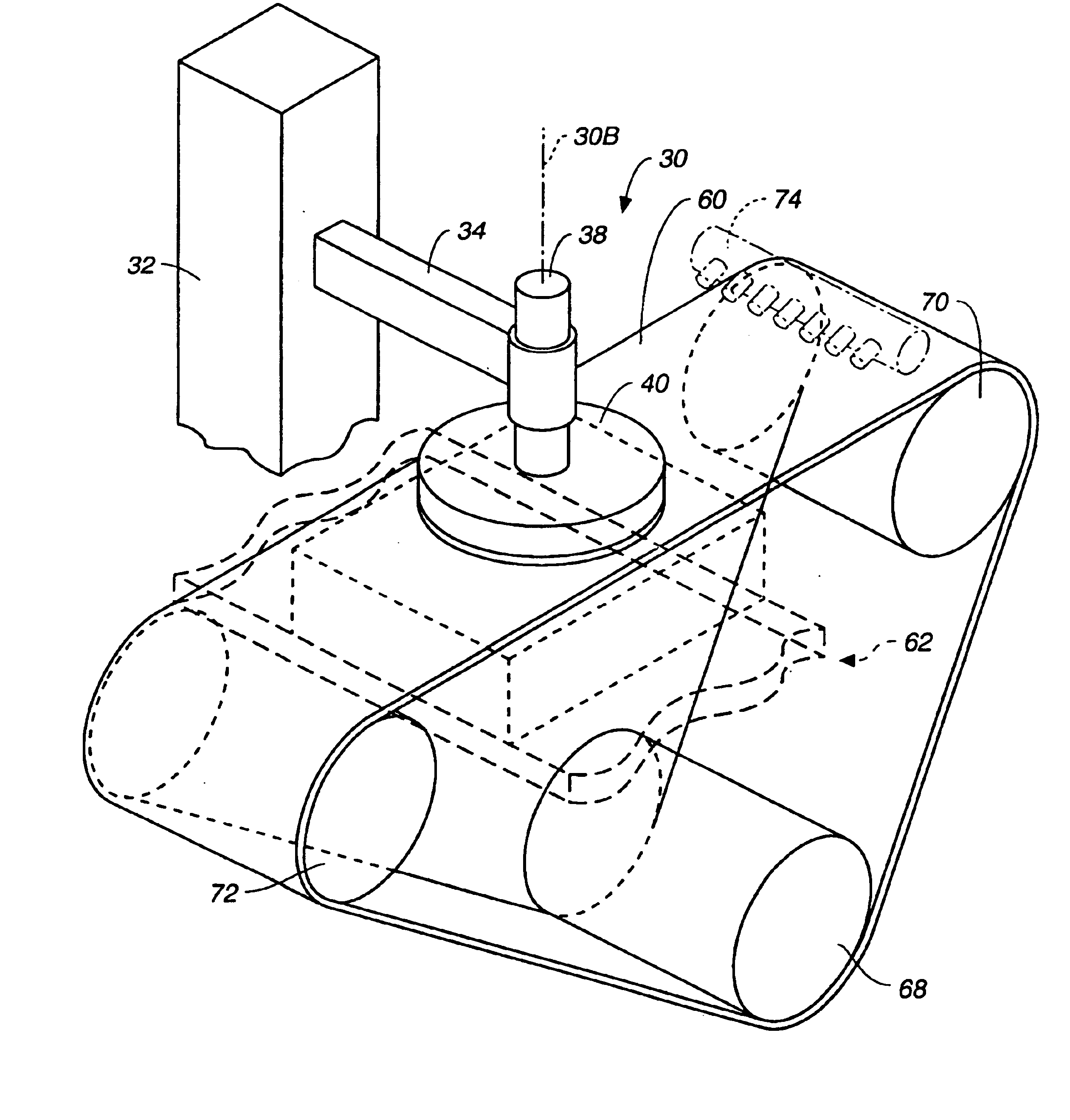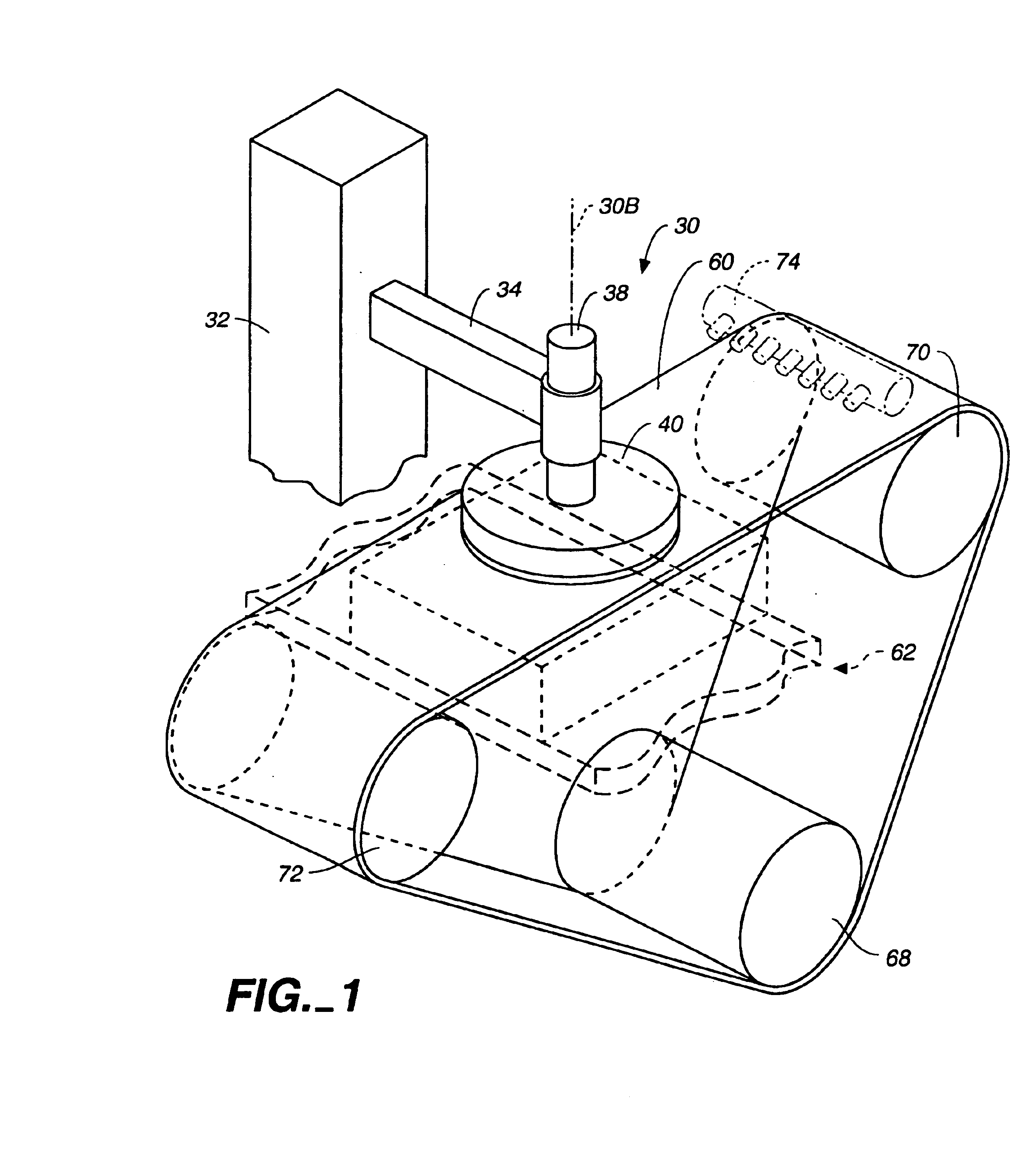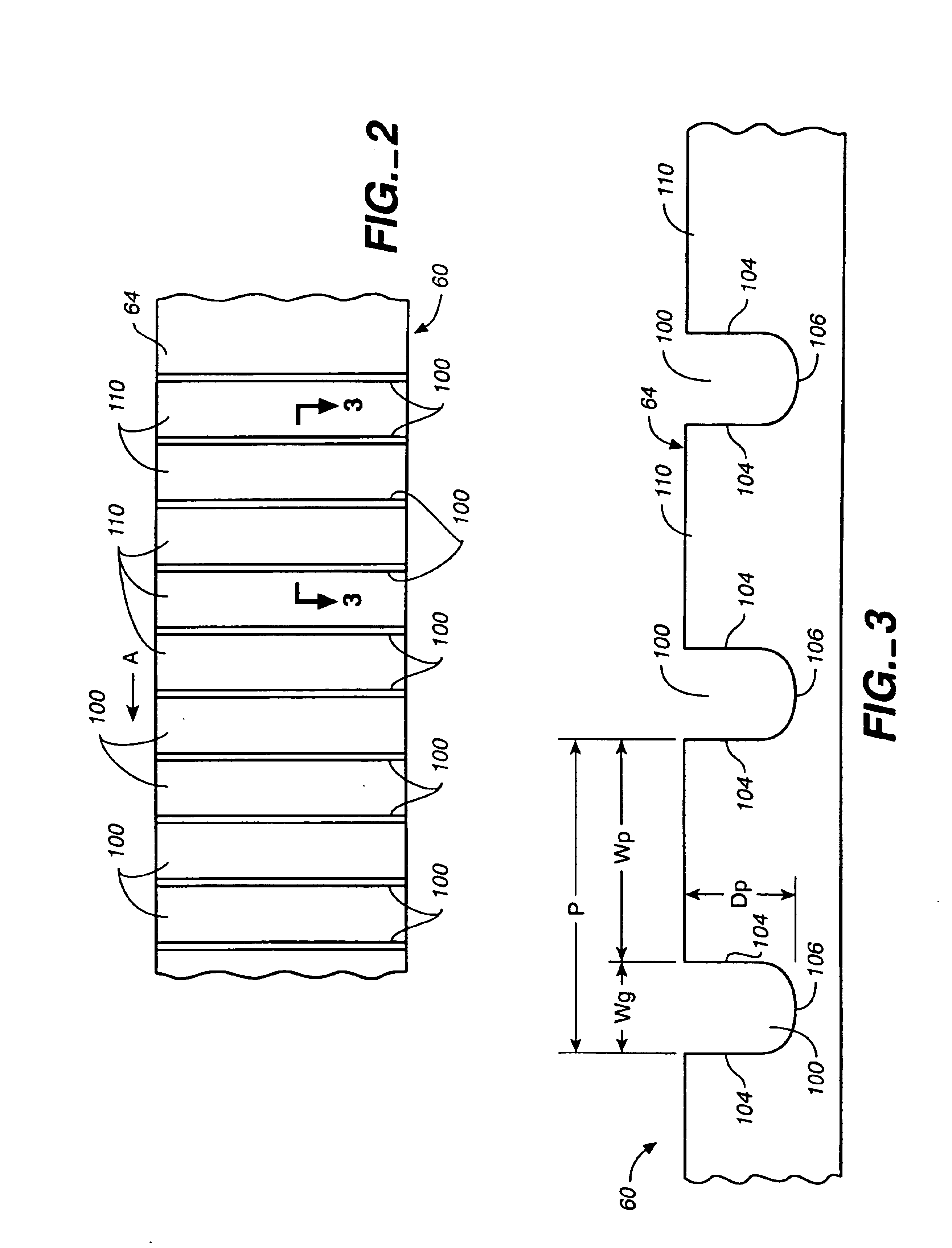Chemical mechanical polisher with grooved belt
a mechanical polisher and groove technology, applied in the direction of grinding machines, manufacturing tools, lapping machines, etc., can solve the problems of limited effectiveness of slurry distribution method, poor polishing effect of surface of polishing pad, and relatively complex process of cmp, so as to improve ensure uniform polishing. , the effect of improving the life of the pad
- Summary
- Abstract
- Description
- Claims
- Application Information
AI Technical Summary
Benefits of technology
Problems solved by technology
Method used
Image
Examples
Embodiment Construction
An apparatus of chemical mechanical polishing (CMP) is illustrated in FIG. 1. In this apparatus, a substrate surface is polished by using an abrasive slurry with an active chemical (e.g., an alkaline solution) in combination with a moving polishing belt 60.
A substrate (wafer) holder (polishing head) assembly 30 includes a fixed base 32 connected to a movable support arm or frame 34. The support frame 34 holds a polishing head shaft 38 which supports a polishing head 40. The polishing head shaft 38 can be rotated by a rotation mechanism (not shown) to control the rotation of the polishing head 40. The vertical position of the wafer holding surface of the polishing head 40 can be controlled, e.g., by a pressure chamber in the polishing head 40 or by a vertical actuator coupled to the polishing head shaft 38.
The polishing belt 60 is routed around three rollers 68, 70 and 72. During polishing, the belt moves continuously in a longitudinal direction between the top two rollers, e.g. from...
PUM
| Property | Measurement | Unit |
|---|---|---|
| depth | aaaaa | aaaaa |
| depth | aaaaa | aaaaa |
| depth | aaaaa | aaaaa |
Abstract
Description
Claims
Application Information
 Login to View More
Login to View More - R&D
- Intellectual Property
- Life Sciences
- Materials
- Tech Scout
- Unparalleled Data Quality
- Higher Quality Content
- 60% Fewer Hallucinations
Browse by: Latest US Patents, China's latest patents, Technical Efficacy Thesaurus, Application Domain, Technology Topic, Popular Technical Reports.
© 2025 PatSnap. All rights reserved.Legal|Privacy policy|Modern Slavery Act Transparency Statement|Sitemap|About US| Contact US: help@patsnap.com



